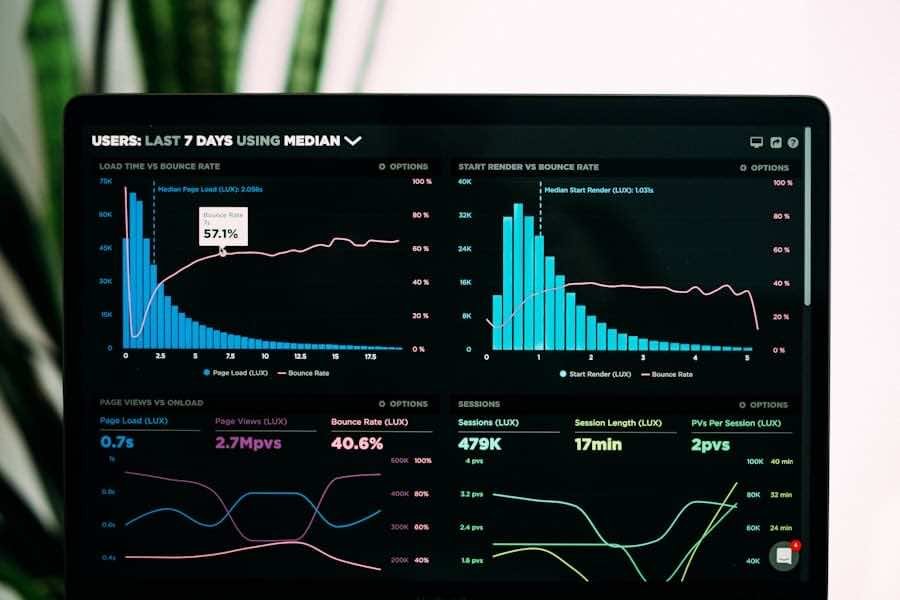In an era where environmental concerns and social responsibility are at the forefront of global discourse, the concept of sustainable growth has gained significant traction. Sustainable growth metrics serve as essential tools for businesses and organisations aiming to balance economic performance with ecological and social stewardship. These metrics provide a framework for assessing how well an entity is performing in terms of sustainability, allowing stakeholders to make informed decisions that align with long-term viability and ethical considerations.
The integration of these metrics into business strategies is not merely a trend; it reflects a fundamental shift in how success is defined in the modern economy. The importance of sustainable growth metrics cannot be overstated. They offer a quantifiable means to evaluate progress towards sustainability goals, enabling organisations to identify areas for improvement and track their impact over time.
By focusing on these metrics, businesses can foster transparency and accountability, which are increasingly demanded by consumers, investors, and regulatory bodies alike. As the global economy continues to evolve, the adoption of sustainable growth metrics will be crucial for organisations seeking to thrive in a landscape that prioritises sustainability alongside profitability.
Summary
- Sustainable growth metrics are essential for businesses to measure their impact on the environment, society, and economy.
- Key sustainable growth metrics to consider include carbon footprint, water usage, energy efficiency, employee satisfaction, community engagement, and economic value added.
- Environmental impact metrics for sustainable growth encompass greenhouse gas emissions, waste generation, and natural resource consumption.
- Social impact metrics for sustainable growth focus on diversity and inclusion, employee well-being, and community development.
- Economic impact metrics for sustainable growth include revenue growth, cost savings, and return on investment from sustainability initiatives.
Key Sustainable Growth Metrics to Consider
When delving into sustainable growth metrics, it is essential to recognise that they encompass a diverse range of indicators that reflect various dimensions of sustainability. Among the most critical metrics are those related to environmental performance, social responsibility, and economic viability. Each of these categories provides insights into how well an organisation is integrating sustainable practices into its operations and decision-making processes.
For instance, carbon footprint measurements can reveal the environmental impact of a company’s activities, while employee satisfaction scores can indicate the social health of the organisation. Another vital aspect of sustainable growth metrics is their ability to facilitate benchmarking against industry standards or competitors. This comparative analysis can help organisations identify best practices and areas where they may lag behind.
For example, a company might assess its waste management practices against those of industry leaders to uncover opportunities for improvement. Furthermore, these metrics can be tailored to specific sectors or regions, allowing for a more nuanced understanding of sustainability challenges and achievements.
Environmental Impact Metrics for Sustainable Growth

Environmental impact metrics are pivotal in assessing how an organisation’s operations affect the planet. One of the most widely recognised metrics is the carbon footprint, which quantifies the total greenhouse gas emissions produced directly and indirectly by a company. This metric is particularly relevant in the context of climate change, as it provides a clear indication of an organisation’s contribution to global warming.
Companies can use carbon footprint data to set reduction targets, implement energy-efficient technologies, and transition towards renewable energy sources. In addition to carbon emissions, water usage is another critical environmental metric. The measurement of water consumption and wastewater generation can highlight areas where organisations can improve efficiency and reduce their ecological footprint.
For instance, industries such as agriculture and manufacturing often have significant water demands; thus, tracking water usage can lead to more sustainable practices such as rainwater harvesting or recycling wastewater. By focusing on these environmental impact metrics, organisations can not only comply with regulations but also enhance their reputation among environmentally conscious consumers.
Social Impact Metrics for Sustainable Growth
Social impact metrics focus on the effects an organisation has on its employees, communities, and broader society. One key metric in this domain is employee engagement, which measures how committed and motivated employees are within their roles. High levels of engagement are often linked to increased productivity and lower turnover rates, making this metric vital for organisational success.
Surveys and feedback mechanisms can be employed to gauge employee satisfaction and identify areas for improvement in workplace culture. Another important social impact metric is community investment, which assesses how much an organisation contributes to local communities through initiatives such as charitable donations, volunteer programmes, or partnerships with non-profits. This metric not only reflects a company’s commitment to social responsibility but also enhances its brand image and fosters goodwill among consumers.
For example, companies that actively engage in community development projects often find that their efforts resonate positively with customers who value corporate social responsibility.
Economic Impact Metrics for Sustainable Growth
Economic impact metrics evaluate the financial performance of an organisation while considering its sustainability efforts. One prominent metric is the return on investment (ROI) for sustainability initiatives. This metric assesses the financial benefits derived from investments in sustainable practices, such as energy efficiency upgrades or waste reduction programmes.
By calculating ROI, organisations can determine whether their sustainability efforts are financially viable and justify further investments in green technologies. Additionally, revenue growth linked to sustainable products or services is another critical economic metric. As consumer preferences shift towards environmentally friendly options, companies that innovate in this space often experience increased sales and market share.
Tracking revenue generated from sustainable offerings allows organisations to align their business strategies with evolving market demands while contributing positively to environmental goals. This dual focus on economic performance and sustainability creates a compelling case for integrating sustainable practices into core business operations.
Measuring and Tracking Sustainable Growth Metrics

The measurement and tracking of sustainable growth metrics require a systematic approach that combines data collection, analysis, and reporting. Organisations must establish clear methodologies for gathering relevant data, which may involve utilising software tools or platforms designed for sustainability reporting. For instance, many companies now employ integrated reporting frameworks that combine financial and non-financial data into a cohesive narrative about their sustainability performance.
Regular monitoring of these metrics is essential for ensuring accountability and driving continuous improvement. By setting specific targets and timelines for each metric, organisations can create a roadmap for achieving their sustainability goals. For example, a company might aim to reduce its carbon emissions by 25% over five years while simultaneously increasing employee engagement scores by 15%.
Tracking progress against these targets allows organisations to make informed decisions about resource allocation and strategy adjustments.
Challenges and Limitations of Sustainable Growth Metrics
Despite the advantages of sustainable growth metrics, several challenges and limitations must be acknowledged. One significant hurdle is the lack of standardisation across industries regarding what constitutes a relevant metric. Different sectors may prioritise different aspects of sustainability, leading to inconsistencies in measurement practices.
This lack of uniformity can complicate benchmarking efforts and make it difficult for stakeholders to compare performance across organisations. Moreover, data availability poses another challenge. Many organisations struggle to collect accurate and comprehensive data on their sustainability efforts due to resource constraints or insufficient tracking systems.
In some cases, companies may rely on estimates or assumptions rather than concrete data, which can undermine the credibility of their sustainability claims. To address these challenges, organisations must invest in robust data management systems and engage with industry groups to develop standardised metrics that facilitate comparison and transparency.
Implementing Sustainable Growth Metrics in Business Operations
The successful implementation of sustainable growth metrics within business operations requires a strategic approach that involves leadership commitment, employee engagement, and stakeholder collaboration. Leadership plays a crucial role in setting the tone for sustainability initiatives; when executives prioritise sustainability as a core value, it permeates throughout the organisation. This commitment can be demonstrated through clear communication about sustainability goals and the allocation of resources towards achieving them.
Engaging employees at all levels is equally important for fostering a culture of sustainability within an organisation. Training programmes that educate staff about the significance of sustainable practices can empower them to contribute ideas and solutions that enhance overall performance. Additionally, involving stakeholders such as customers, suppliers, and community members in sustainability discussions can lead to innovative approaches that benefit all parties involved.
By creating an inclusive environment where diverse perspectives are valued, organisations can effectively implement sustainable growth metrics that drive meaningful change across their operations.
In a recent interview with Samuel Leach, the chairman of Logiqs, the discussion revolved around stock market success and the importance of sustainable growth metrics. Leach highlighted the significance of implementing sustainable practices in business operations to ensure long-term profitability and success. This aligns with the concept explored in the article on sustainable fulfilment, which delves into how online stores can increase profitability by adopting sustainable solutions. By focusing on sustainable growth metrics, businesses can not only drive financial success but also contribute positively to the environment and society. To read more about this topic, check out the article here.
FAQs
What are sustainable growth metrics?
Sustainable growth metrics are measurements used to assess a company’s growth in a way that is environmentally friendly, socially responsible, and economically viable in the long term.
Why are sustainable growth metrics important?
Sustainable growth metrics are important because they help businesses and investors evaluate a company’s performance in a way that takes into account its impact on the environment, society, and long-term financial stability.
What are some examples of sustainable growth metrics?
Examples of sustainable growth metrics include carbon footprint reduction, energy efficiency improvements, waste reduction, employee satisfaction and retention, diversity and inclusion metrics, and financial indicators that reflect long-term value creation.
How can companies measure their sustainable growth?
Companies can measure their sustainable growth by tracking and reporting on key performance indicators related to environmental impact, social responsibility, and long-term financial performance. This may involve collecting data on energy usage, waste generation, employee turnover, diversity statistics, and financial metrics such as return on investment and total shareholder return.
What are the benefits of using sustainable growth metrics?
Using sustainable growth metrics can help companies improve their environmental and social impact, enhance their reputation, attract and retain employees, reduce costs, and create long-term value for shareholders. Additionally, it can help companies align with global sustainability goals and regulations.
